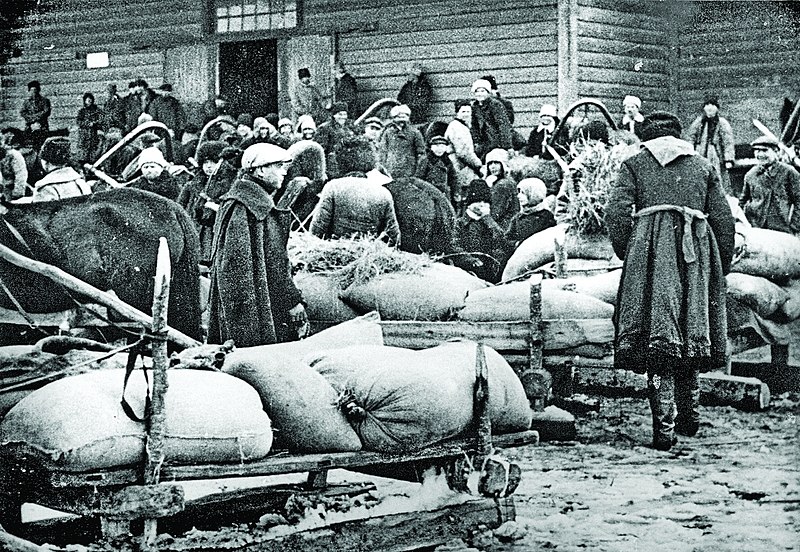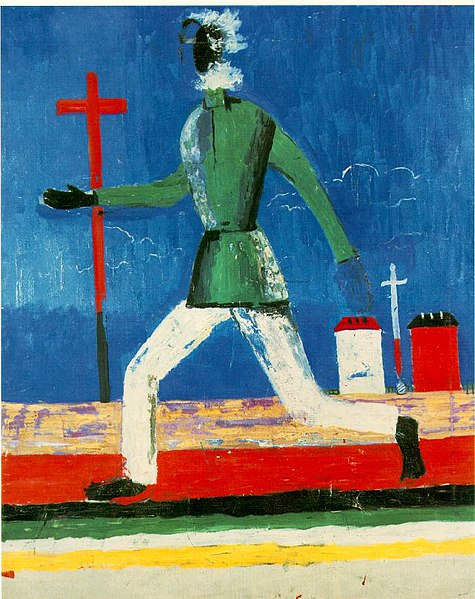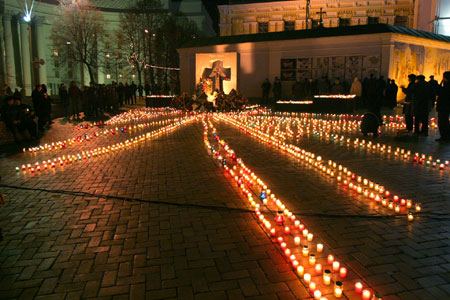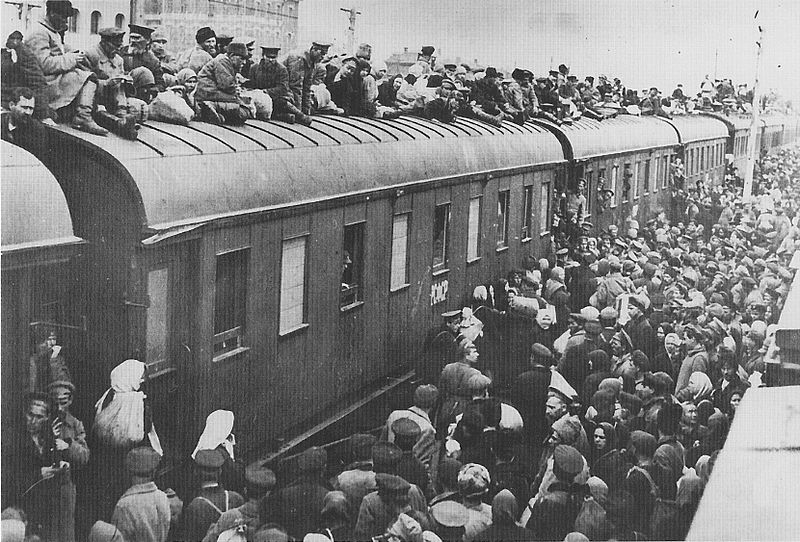Holodomor – Famine in Ukraine, 1932-33
Alex Babcock
Introduction
Holodomor is the name given to the mass starvation in the Ukrainian Famine of 1932-33. Occurring between the Russian Revolution and the Second World War, the Holodomor was denied by the Soviet Government until only a few years before the collapse of the Soviet Union. This state controlled secrecy kept Western historians in the dark about the starvation, and only until the 1980’s did the West take scholarly interest in the history of the Ukrainian Famine, and the idea that the Famine was, at least in part, man-made.
But the history of the Holdomor is still contested. Census data and Soviet records have been analyzed since the initial look at the situation in the 1980’s, and still no conclusion is accepted by all sides. Records are inconsistent and the number of people who died as a result of the famine varies between historians, ranging from 3 million to 14 million dead. Causes of the starvation are debated, and the nature of the Famine as a weapon of Stalin’s regime against the Ukrainians is central to the debate. Many parties in modern Ukraine want to define the Holodomor as an act of genocide, while Russia today opposes that point of view, as do many modern historians.
Primary Issues
The most vehemently contested aspects of the Ukrainian Famine of 1932-33 are:
- The intentions behind the Soviet government’s initiation of agricultural collectivization in the Ukrainian territory, building up right before the Famine.
- The natural causes of the Famine versus state-controlled causes
- The definition of the Ukrainian Famine as an act of genocide
Written Sources
The Taste of War: World War Two and the Battle for Food
Lizzie Collingham, The Taste of War: World War Two and the Battle for Food (London: Penguin Group, 2011)
Collingham’s examination of starvation before and after World War II does not focus heavily on the Ukrainian Famine, but it does describe the desperate situation created by Soviet policy. The mention that the Holodomor receives in The Taste of War is in itself not an incredibly rich source of information, but it is instead a backdrop to a future conflict. This is an interesting perspective; Collingham is concerned with many more famines and periods of starvation, so her treatment of the Holodomor alongside such events as the Bengal famine of 1943 and the Chinese War of Resistance gives the reader a series of comparable events. Collingham explains how collectivization exacted a deadly toll on the Ukrainian villages, but does not go into detail about the Soviet policy maker’s intentions, being more concerned with its implications towards the World War looming on the horizon.
Harvest of Despair: Life and Death in Ukraine under Nazi Rule
Karel C. Berkhoff, Harvest of Despair: Life and Death in Ukraine under Nazi Rule (Cambridge: Harvard University Press, 2004)
Karel C. Berkhoff’s work, Harvest if Despair, actually focuses on the German invasion and occupation of Ukraine in the early 1940’s. While this began almost a decade after the Holodomor, this perspective, like Lizzie Collingham’s, explores what political and societal effects Soviet Policy had on the course of Ukraine during the war. The actions of the Ukrainians in the Reichskommisariat is indicative of the effects that the Holodomor left on the societies. Berkhoff’s first chapter does address the history of Ukraine before the German invasion, covering the Famine. While agreeing on the man-made nature of the Ukrainian Famine, Berkhoff’s analysis of the event relies on very low estimates of victims.
Stalin’s Genocides
Norman M. Naimark, Stalin’s Genocides (Princeton: Princeton University Press, 2010)
Naimark states his intention to define Stalin’s actions in the 1930’s as genocide. A considerable part of his argument is devoted to the Ukrainian famine. Naimark, however, argues that looking at singular events such as the Holodomor, “while leaving out others, tends to gloss over the genocidal character of the Soviet Regime, which killed systematically rather than episodically.”[1]. He also covers the problems with comparing genocide perpetrated by the Soviet Regime with that committed by the Nazi regime. Stalin’s Genocides offers insight into the significance and examination of declassified Soviet documents alongside Naimark’s comments on the history of the Holodomor. Particular emphasis is placed on definitions given to genocide by various authorities, and how instances and periods such as the Ukrainian Famine fit into the wider frame of Soviet genocide. Naimark concludes at the end of his chapter exclusively on the Holodomor that it must be considered genocide.
The Harvest of Sorrow: Soviet Collectivization and the Terror-Famine
Robert Conquest, The Harvest of Sorrow: Soviet Collectivization and the Terror-Famine (New York: Oxford University Press, 1986)
Robert Conquest offers one of, if not the, first comprehensive examination of the Ukrainian Famine. Conquest covers the cost in human life of de-kulakization and of the grain collection policies of the Soviet Union in Ukraine in and around 1932-33. His work generated interest in the Holodomor and attacked the Soviet policy-makers and the far left for remaining silent on the issue, allowing it to be forgotten. His analysis of the Soviet Union is thorough, but was also undertaken before the Union fell apart and the Soviet archives opened in the early 1990’s. While much of what Conquest argued was vindicated by the documents that became available, his research was still done without that resource available to him, and could be subject to incorrect estimations. Nevertheless, Harvest of Sorrow is incredibly important in the investigation and memory of the Holodomor, and as a source for research it is entirely relevant.
Online Sources
Debating the Undebatable?
David Marples, “Debating the undebatable? Ukraine Famine of 1932-33,” The Ukrainian Weekly, July 14, 2002, 2, 21. URL
The Ukrainian Weekly is a newspaper that caters to the Ukrainian American community, and has been publishing since 1933. This article by Dr. David Marples highlights the continued debate over the Ukrainian Famine of 1932-33. Marples does not go into much detail about the famine itself, and so this piece does not do much to illuminate the Holodomor itself. But the article does examine the persistent reconsideration of the Famine and how it affects national identity; Marples article also represents the Famine’s impact on the future, how the need to debate the Famine is still felt by Ukrainian populations and historians.
Ethnic Issues in the Famine of 1932-1933 in Ukraine
David R. Marples, “Ethnic Issues in the Famine of 1932-1933 in Ukraine,” Europe-Asian Studies Vol. 61 No. 3 (May 2009): 505-518, doi: 10.1080/09668130902753325 URL
Dr. David Marples offers a much more comprehensive examination of the national and cultural implications of the Holodomor and its memory in his 2009 journal article. Marples examines contemporary historiography of the Ukrainian Famine, tracing Western interest on the subject back to the 1980’s and Robert Conquest’s Harvest of Sorrow. While he admits Conquest was working at the time without much available data to confirm his estimates, his work on the Famine initiated much more scholarly examination. But Marples seeks to underline the fact that the West refuses to come to a consensus on labeling the Holodomor an act of genocide. He argues that Western examinations of the Famine do not take into account the staggering significance the Holodomor has on Ukrainian national identity and national history. Marples offers a history of Holodomor history, and an in-depth exploration of the ethnic issues that are inherent to the Famine.
Legacy of Famine Divides Ukraine
Helen Fawkes, “Legacy of famine divides Ukraine,” BBC News, November 24, 2006 URL
This BBC news article covers the Ukrainian Famine, “one of the bleakest moments in Ukraine’s history.” Observing the buildup before Memorial Day, the article further underlines the effect the Holodomor still holds over the Ukrainian people. Ukraine’s attempts to have the Famine recognized as an act of genocide by the UN have been opposed by Russia, and the contest over victimization and memory persists. The article also highlights how the Ukrainian parliament itself is divided on the issue, with various parties remaining pro-Russian.
Holodomor
“Holodomor,” Wikimedia Foundation, Inc., accessed April 3, 2013. URL
The Wikipedia article on the Holodomor contains summaries of many relevant historians conclusions on the subject matter and its classification as genocide. However, being a contentious political subject, the material presented are much more subject to bias than other, more scholarly sources. The page does link to Wikimedia Commons’ page for media related to the Holodomor as well as other relevant pages such as “Causes of the Holodomor,” and “Holodomor in modern politics,”; these articles are subject to the same unreliability as the first.
Stalin and the Soviet Famine of 1932-33 Revisited
Michael Ellman, “Stalin and the Soviet Famine of 1932-33 Revisited,” Europe-Asia Studies Vol. 59 No. 4 (June 2007): 663-693, URL
Michael Ellman examines Stalin’s statements, policies, and activities surrounding 1932-33 to determine purpose in the starvation of millions in Ukraine. He also examines the definition of the Holodomor as genocide and other historians approaches to the Ukrainian Famine. Ellman is of the opinion that the starvation of many was seen as a result of their own failure to work adequately by many in the various echelons of Soviet control. Ellman states that “The Davies and Wheatcroft interpretation pays too little attention to the view of the Stalinists in 1932-33 that many of the dying were ‘counter-revolutionaries’ or ‘idlers’ or ‘thieves’ who fully deserved their fate.”[2]. Ellman does agree with much of Davies’ and Wheatcroft’s assertions, but he also posits that the drop in deportations reflects a switch to the “cheaper” alternative of simply starving undesirable populations. Originally intended as a reply to remarks made by Davies and Wheatcroft on a previous entry of Ellman’s, he offers an expanded and thorough analysis of the Holodomor. Ellman concludes by stating that, if a more relaxed definition of genocide is used, the millions of deaths of the Ukrainian groups would constitute genocide, as well as Stalin’s entire plan to “liquidate the kulaks as a class”[3].
A Crime Against Humanity Arguably Without Parallel in European History
Rebekah Moore, “A Crime Against Humanity Arguably Without Parallel in European History,” Australian Journal of Politics and History Vol. 58 No. 3 (Sept 2012): 367-379, doi: 10.1111/j.1467-8497.2012.01641.x URL
Rebekah Moore addresses the issue of whether the Holodomor can really be classified as genocide. Moore covers both how many historians have come to the conclusion of genocide and how reservations have been raised over the definition concerning peoples’ motives “to ‘benefit from history’ through claiming a particular type of victimization.”[4]. Moore covers both schools of thought on the matter, offering closest inspection of the Western views of the Holodomor. Rebekah Moore’s journal article is clear and focused, and covers extremely relevant material and opinions. Moore covers both Conquest’s early view of the Holodomor as entirely man-made as well as Davies’ and Wheatcroft’s later attempt to show the event as multi-causal and a consequence not just of genocidal intent. But a large part of Moore’s argument goes towards emphasizing the school of thought that recognizes the desire of many groups to be illustrated as the victim of genocide; exclusivity and inclusivity of the term genocide are examined.

Some "historical displays" in Ukraine mislead observers; this exhibition, titled “They were going to Kharkiv for bread 1933," uses a photo of the 1921 Russian Famine.
The Soviet Famine of 1932-33 and the Crisis in Agriculture
R. W. Davies and S. G. Wheatcroft, “The Soviet Famine of 1932-33 and the Crisis in Agriculture*” in Challenging Traditional Views of Russian History, (Palgrave: Macmillan, 2002), 69-91. URL
Davies and Wheatcroft offer an alternative to Conquest’s interpretation of the Famine of 1932-33. While not claiming to “absolve Stalin – or the Bolshevik leadership as a whole,”[5], Davies and Wheatcroft disagree with the claim that the crisis was almost entirely due to deliberately harmful redistribution. In their chapter on the Famine of 1933-32, they discuss the grain harvests leading up to the crisis and various agricultural issues of the Soviet period. Davis and Wheatcroft offer data on the conditions surrounding the Holodomor, and in their refutation of Conquest they present another possible explanation for the Ukrainian Famine. The policies of the Politburo and the agricultural failures that resulted are revisited and form the basis for their explanation of the Holdomor; they do not examine much of the cultural impact of the Holodomor.
Capital of Despair: Holodomor Memory and Political Conflicts in Kharkiv after the Orange Revolution
Tatiana Zhurzhenko, “Capital of Despair: Holodomor Memory and Political Conflicts in Kharkiv after the Orange Revolution,” East European Politics and Societies Vol. 25 No. 3 (August 2011): 597-639. doi: 10.1177/0888325410387646 URL
Tatiana Zhurzhenko’s article on the lasting significance of the Holodomor offers a contemporary view of the famine and its consequences. Zhurzhenko emphasizes the concept of Ukraine as a “postgenocide” society after the Orange Revolution, as she observes the seventy-fifth commemoration of the Holodomor. Kharkiv, the Ukrainian city very near to the Russian border, exemplifies the contest between separate factions over the memory of the Ukrainian Famine and its implications for the future. Kharkiv was the capital of the Ukrainian Soviet Socialist Republic until 1934, and the “Sovietization” it underwent is still reflected in the way some treat the memory of the Holodomor. The effect of reexamining past events is an important factor in reconstructing Ukrainian national identity, according to Zhurzhenko, and the Holodomor is an event may are still unwilling to discuss. This article is an important resource for examining contemporary views over the Famine and how it remains relevant for post-Soviet Ukraine.
Hitler vs. Stalin: Who Was Worse?
Timothy Snyder, “Hitler vs. Stalin: Who Was Worse?” The New York Review of Books, January 27, 2011 URL
Timothy Snyder, author of Bloodlands: Europe Between Hitler and Stalin, argues against overemphasis of the peoples killed by Stalin and his regime. In this essay, Snyder compares the estimates of people killed or whose deaths were caused by each regime. In his analysis of the casualties on Stalin’s side, he mentions the Ukrainian Famine, but declines to call it the Holodomor. In fact, Snyder uses very low estimates compared to most other historians’ examinations of the Famine, and in the end concludes that the widely held assumption that more men and women died under Stalin’s regime is untrue. Snyder also avoids the label of genocide in his essay entirely, setting his argument as well as his data far away from many other historians’ work on the Ukrainian Famine and the Holocaust
A trailer for Famine-33 (Holod-33), a 1991 Ukrainian film directed by Oles Yanchuk and based on the novel The Yellow Prince, written by Vasyl Barka
Citations
[1] Norman M. Naimark, Stalin’s Genocides (Princeton: Princeton University Press, 2010), 3.
[2] Michael Ellman, “Stalin and the Soviet Famine of 1932-33 Revisited,” Europe-Asia Studies Vol. 59 No. 4 (June 2007): 665.
[3] Ibid., 688.
[4] Rebekah Moore, “A Crime Against Humanity Arguably Without Parallel in European History,” Australian Journal of Politics and History Vol. 58 No. 3 (Sept 2012): 367.
[5] R. W. Davies and S. G. Wheatcroft, “The Soviet Famine of 1932-33 and the Crisis in Agriculture*” in Challenging Traditional Views of Russian History, (Palgrave: Macmillan, 2002), 69.











